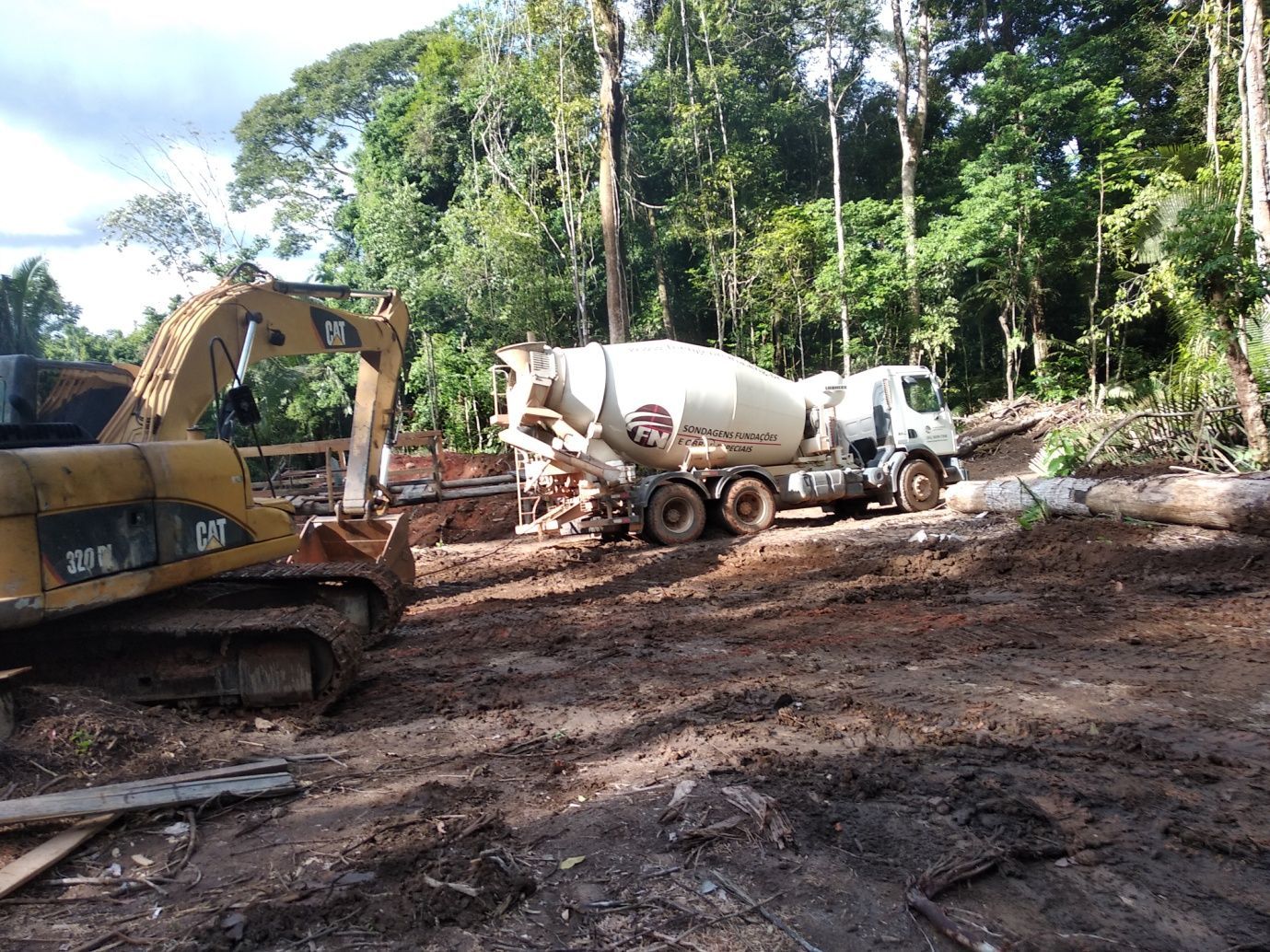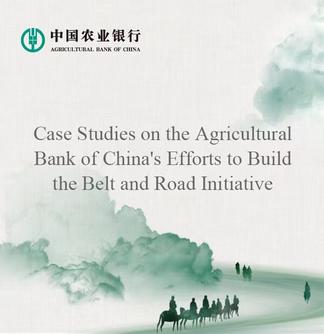
Photo taken on Oct. 12, 2018 shows that construction team for the section one, phase two of the Belo Monte Project is applying a crawler tractor to work with a concrete mixer. (POWERCHINA)
BEIJING, April 25 (Xinhua) -- In the remote land of South America, the long-standing Andes Mountains stretch endlessly. The lguazu Falls pour down. Cigars, beaches, waves, sunshine and palm trees make this place full of vitality. Deep into the northern Amazon tropical rainforest, birds are singing among tranquil and exuberant trees, across which sunlight streaks, making people feel cozyand leasant.
Despite this pleasant scene, engineers are working in the blazing sun for the section one, phase two of the Belo Monte UHVDC Transmission Project. The word "blazing" is not exaggerating. The highest temperature in summer here can climb as high as 40 degrees Celsius, making field staff always sweaty.
The construction site is situated in Pacaya, Pará, Brazil. Engineers from Brazil and China are working together to build an "electricity expressway", which transmits power from the north to the south of the country. This project starts from Belo Monte Xingu Convertor Station in the north, and meanders through the Amazon rainforests area, Brasilia Plateau, and Hilly Area in Rio to reach the Rio Converter Station in the southeast, stretching a total distance of 2,580 kilometers.
"Once the Belo Monte power plant is completed, it can meet the annual electricity demand of 18 million people in Brazil, which will be essential in bridging the gap between supply and demand," said Chen Qingxiang, project manager of POWERCHINA Fujian Engineering Co., Ltd. .
Meanwhile, nearly 5 billion reals (about 1.27 billion U.S. dollars) will be invested into the Belo Monte UHVDC Transmission Project, which will boost the development of Brazil's energy supply, electrical equipment, raw materials and other upstream and downstream industries, and create more than 40,000 jobs and 4 billion reals of tax revenue for the country.
As part of the "electricity expressway", the section one, phase two of the Belo Monte UHVDC Transmission Project is located deep in the Amazon jungle, stretching 250 kilometers. The project department for this section is situated in Pará State's Pacaya, a city which the Federal University of Rio de Janeiro once listed as one of the country's laggards in urban transportation, infrastructure and living environment. The project is scheduled to be completed in early March 2019. Although this section has seen quicker progress than others, the upcoming four-month rainy season still worried Chen. When the monsoon comes, torrential rains will turn the dirt roads leading to the jungle into muddy "marsh", making it extremely difficult for transport vehicles to travel to the construction site. Consequently, construction will be more difficult and cost will increase. It was for this reason that the section one in the Amazon area is considered the most difficult one among all the sections.
In order to finish construction on schedule without compromising quality, the project team decided to fight a tough battle in the rainy season.
However, as the saying goes, it never rains but it pours. In November 2018, less than a month before the Amazon rainy season arrived, the team encountered a serious problem while working against the clock: when arranging the conductor layout between two towers, they found lying in the middle were two other transmission lines, which were separately franchised to two different foreign-invested companies. Blackouts will incur loss of revenue, so the two firms were unwilling to cooperate even though Brazil's National Electric Systems Operator (Operador Nacional do Sistema Elétrico, ONS) mediated for many times. The rainy season was around the corner. The project team had no choice but to take an arduous approach — erecting the conductors by crossing the two live lines.
To solve the problem, a Brazil-Chinese joint team tested the feasibility of the construction method for many times. Finally, with joint efforts from specially invited experts and front-line technicians, the task was completed ahead of the monsoon.
The rainy season came as expected. Torrential rain began to pour starting February, resulting in surging rivers in Anap, where another project camp of section one was located. Part of a culvert along a trunk road was destroyed in heavy rain, which led to the collapse of the road. Transportation for the project and local residents was seriously affected.
"Knowing what had happened, we immediately sent surveying and construction staff to help." Chen said the strong rainfall made the technicians give up the idea of repairing the culvert. Instead, they chose to build a bridge and enlarge the drainage space. With the concerted efforts, the road has been restored.
It is the core task of this hard-fought battle to keep working despite the monsoon. When the muddy mountain road was difficult to travel, engineers came up with an idea to pull the cement mixer using a high-power agricultural tractor. When major roads were flooded, engineers built primitive bridges so that vehicles can run to the construction site smoothly.
"My father and I are responsible for erecting lines outdoor." Jose Sancho, a Pacaya local who just turned 20, said that during the tough battle, he and his father stayed focused on their jobs, ensuring the preformed armor rods were correctly set up, while double checking the work of five other groups.
Chen felt relieved. He also noticed that hardworking and professional Sancho also made it a point to learn from tensioner operators and study wiring layouts of technicians once he finished his work.
"When the battle is over, the manager asked me to get familiar with elementary technical work. During the transition period, Chinese engineers taught me how to understand engineering data and how to do statistical calculations patiently." Sancho said that he was really grateful for Chinese colleagues' help. After training himself from a labor worker to a junior technical assistant, Sancho not only earned better income, but also acquired a clear vision of his career. Chinese engineers were Sancho's teachers at work, and very good friends in their spare time. They played football together and were close friends.
During the three-month monsoon, the section one, phase two of the Belo Monte UHVDC Transmission Project had managed to overcome difficulties of all kinds. The overall progress outperformed most of the other nine sections, laying a good foundation for timely delivery.
At night, the Rio de Janeiro beaches are crowded with people, with dazzling lights and endless Samba dances to the cheering electronic music. Here people share their passion and enthusiasms that can be found nowhere except the land of South America. They have no idea at all, however, that deep into the Amazon jungle, a group of Chinese and Brazilian workers have already fallen asleep. And when the sun rises the next morning, they will dedicate themselves to their work again. (Contributed by Peng Hua, edited by Li Haoran, Jiang Feifan)




 A single purchase
A single purchase









